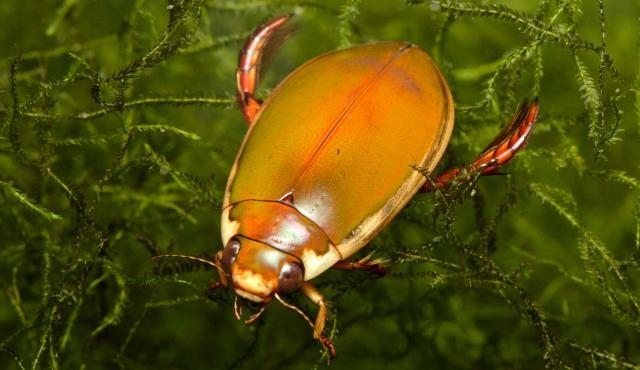
Diving Beetle
Onychohydrus scutellaris
| Details | |
|---|---|
| Type | Invertebrate |
| Group | |
| Former Scientific Name | Homeodytes scutellaris |
| Biology | Immediately after biting their prey the adults secrete digestive enzymes into their prey. Diving beetles store air in a bubble held beneath their hardened wings. They use this oxygen during their underwater dives so they can hunt food and find mates. When prey numbers get too low, the beetles fly to a new water body and settle there. Adults lay their eggs in the water where tiny predatory larvae hatch out. The larvae spend their entire larval stage in the water before digging into the muddy banks and pupating. |
| Distinctive Markings | Large, paddle-like hind legs with a dense line of swimming hairs. |
| Taxonomy | |
|---|---|
| Phylum | Arthropoda |
| Class | Insecta |
| Order | Coleoptera |
| Family | Dytiscidae |
| Genus | Onychohydrus |
| Species | scutellaris |
The adults are strong swimmers and use their hind legs together like boat oars.
| Interesting Facts | |
|---|---|
| Diet | Carnivore. Eats small aquatic animals including insects, crustaceans, worms, leeches, molluscs, tadpoles and possibly small fish. |
| Habitat | Lives in freshwater bodies such as dams and lakes. |
| Native Status | Native to Australia |